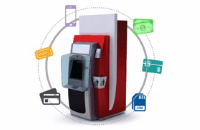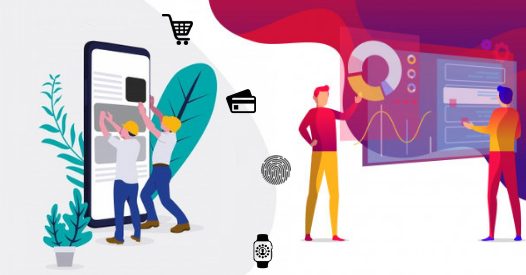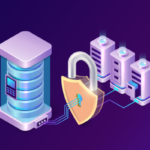Digital transformation in banking is a strategic imperative that everyone in Pakistan’s banking industry understands. According to GSMA Intelligence, the majority (55%) of Pakistan’s 193 m population is less than 25-years of age with even gender split and mostly (61%) living in rural areas. The country has around 45 m bank accounts and 90 m unique subscribers out of 135 m SIMs. This implies that the mobile subscribers have outnumbered the bank account holders by the ratio of 2:1.
In 60-years, the banking has come a long way from nationalization to privatization. The industry has expanded its branch footprint, provided baseline DFS infrastructure and enabled interoperability through interbank switches. There are a total of 46 commercial and microfinance banks in the country today. However, for every 100,000 people there are only six online branches (12,424 in total). Similarly, there are only six ATMs (total 11,381) and 26 POS terminals (total 50,769) for every 100,000 people.
In contrast, only nine branchless banking service providers have created around 210,536 active agents, in only eight years. This number is around three times the size of online branches, ATM and POS terminals–all combined!
The Evolution of “Digital” in Banking
McKinsey Global Institute (MGI) suggests that the word “digital” signifies the usage of digital infrastructure, including mobile and Internet, as the primary means of service delivery and seamless transaction processing, with minimum to no use of cash and traditional bank branches.
In its true sense, digital banking is much more than this. The widespread technology adoption regarding access ubiquity, greater bandwidth, transparency, and data-security is offering new business propositions for the banks.
If you look at Pakistan’s banking industry, you will notice that forces such as changing payments landscape, competition from Fintechs and arrival of mobile money services through telecoms are pushing banks to accelerate digital transformation.
Based on the research of MGI and EFMA, the digital transformation journey of banks can be described in three characteristic but overlapping eras along the digital curve. Let’s understand each of them in Pakistan’s context:
Digital Banking 1.0:
This was the era of the branch-centricity and deposit banking. The sales and service delivery completely relied on their branch network. Therefore, banks invested heavily in expanding branch footprint and enhanced user-experience at branch-level. The operations were mostly product-centric and direct channels like Internet banking and ATM were used to complement the branch-centric operations. The success depended on the broader customer base, size of deposits and higher price premium for the value they delivered.
The banks took digital transformation on a project-by-project basis using pilots and gradual deployments.
Digital Banking 2.0:
This is the era of customer-centricity and transaction banking. The branches still play a crucial role, but the emphasis is shifting toward Omni-channel experience leveraging the access ubiquity through widespread mobile footprint and use of sophisticated technologies. The API platform is the new buzzword and so is, customer analytics. The sales and service have started to rely more on direct channels for customer acquisition and service delivery. This model relies more on a greater share of tech-savvy customers at a reduced cost, and significant cross-selling opportunities but without price change.
The banks are taking digital transformation as a business with a clear long-term vision, cross-functional team formation with test and learn approach supported by flexible and agile development methods.
Digital Banking 3.0:
This will be an era of “digital” as a core, bringing pure digital banks to life. The branch might still exist to fulfill complex service needs of customers and for “showcasing” their physical presence; however, the banks will rely on highly innovated, and technology enabled, self-directed service models to serve their customers. These models will provide least cost opportunity for the banks to acquire new customers and extend their market reach.
The banks will take digital transformation as a pure business model using subsidiaries to accelerate digital transformation, and by dissemination of digital in their culture and innovation, leading to fully digital, paperless products.
TPS – Digital Transformation Enabler and Catalyst
For over 21 years, TPS has played an instrumental role, both as an enabler as well as a catalyst, in shaping up the digital banking sector of Pakistan.
In the early days, TPS adopted a strategy to equip banks with direct channel management capabilities through ATM & POS acquiring and Internet banking solutions. Later on, TPS offered card management solutions, addressing the debit and prepaid card market needs. TPS worked with PRI to bring inward remittances through formal, banking channels. It also enabled the national-level switch interoperability in Pakistan through its switching solution deployed at 1LINK.
Today, a lot of emphasis is placed on “mobile” in everything we do at TPS. By taking advantage of always-on consumer connectivity and widespread use of social networks, TPS is helping banks in acquiring new customers at lower cost and processing of payments originated from these networks. TPS is also working with banks for customer and payment analytics solutions to enable them to offer customer-centric products and to help them in making right decisions regarding what service to offer, and at what price, to their customers. These solutions are complemented by IBM’s API management platform API Connect. The platform empowers banks to build their own applications on top of what we offer. This way they can engage fintechs and community of developers to accelerate innovation and open new sources of revenues.
Digital Wallets
TPS realized that whether the industry adopts the financial inclusion approach or takes the digital banking route, digital-wallets are going to be the anchor of the digital revolution. However, launching branchless banking services had become more like a rat race back then–only to get ahead of the competition. Today, failure to scale is a major deterrent, and ecosystem development and cardless interoperability are the core challenges, in solving the much bigger problem of financial inclusion in Pakistan.
Anticipating these challenges, TPS focused on building surrounding systems–strengthening the financial inclusion initiatives by various players of the industry. In parallel, TPS continued to overhaul its technology stack, enhance its core capabilities and develop its wallet management and agency banking solution on its proven, robust, and reliable IRIS 5 Payment Platform – as a one stop solution.
Service Models
To minimize CapEx and substantially reduce the time-to-market of the new, innovative business ideas of its clients, TPS is offering them with a choice to outsource their payment systems operations with infrastructure, under a managed services model, to Covalent, a joint venture of TPS and Access Group.
TPS is also working with selected strategic accounts on a co-creation model. In such a model clients share their product roadmap and development teams to fast-track the rollout of services. This is also supported by agile methodologies, reliable tools and sophisticated technology. The model enables clients to think beyond current technological and business model constraints. This way they realize their innovative ideas before they lose their potential value in the fast-changing market dynamics.
Besides this, TPS is heavily investing in R&D, and in building industry alliances and partnerships to offer an ecosystem for a sustainable business model and affordable infrastructure components to the industry.
Why IRIS Money?
IRIS Money provides a unique opportunity to convert the mobile phones of your customers into their personal-banks. It supports various digital payment instruments to offer an omni-channel experience across all web and mobile apps. The experience is further enriched by companion cards issuance to enable interoperable ecosystem for the customers.
The solution enables banks to extend market reach by offering convenient, secure and affordable services to their customers. It also opens doors for more intuitive products and delivery methods that extend traditional financial products.
IRIS Money covers mobile money use-cases already prevalent in the industry. Moreover, its configurable and extensible platform allows banks to realize new customer scenarios. This helps them address unique business challenges of the market and support a variety of business models.
It enables cost-effective customer offerings and increases business profitability by opening new sources of revenue.
IRIS Money helps banks in increasing uptake of their offerings by using Mobile Connect – a GSMA-backed authentication solution–to provides simple, secure and convenient access to online services.
The solution also offers Open APIs in compliance with GSMA Mobile Money API initiative. GSMA jointly designed these APIs with mobile money providers, platform vendors, TPSPs and the industry partners. These harmonized APIs combine best practices in the technology industry for enabling greater interoperability.
IRIS Money also offers loyalty, fraud management, and business intelligence components through TPS’s strategic partnerships.
Disclaimer: This article originally appeared in Business Recorder on 30th March, 2017.










Leave A Comment